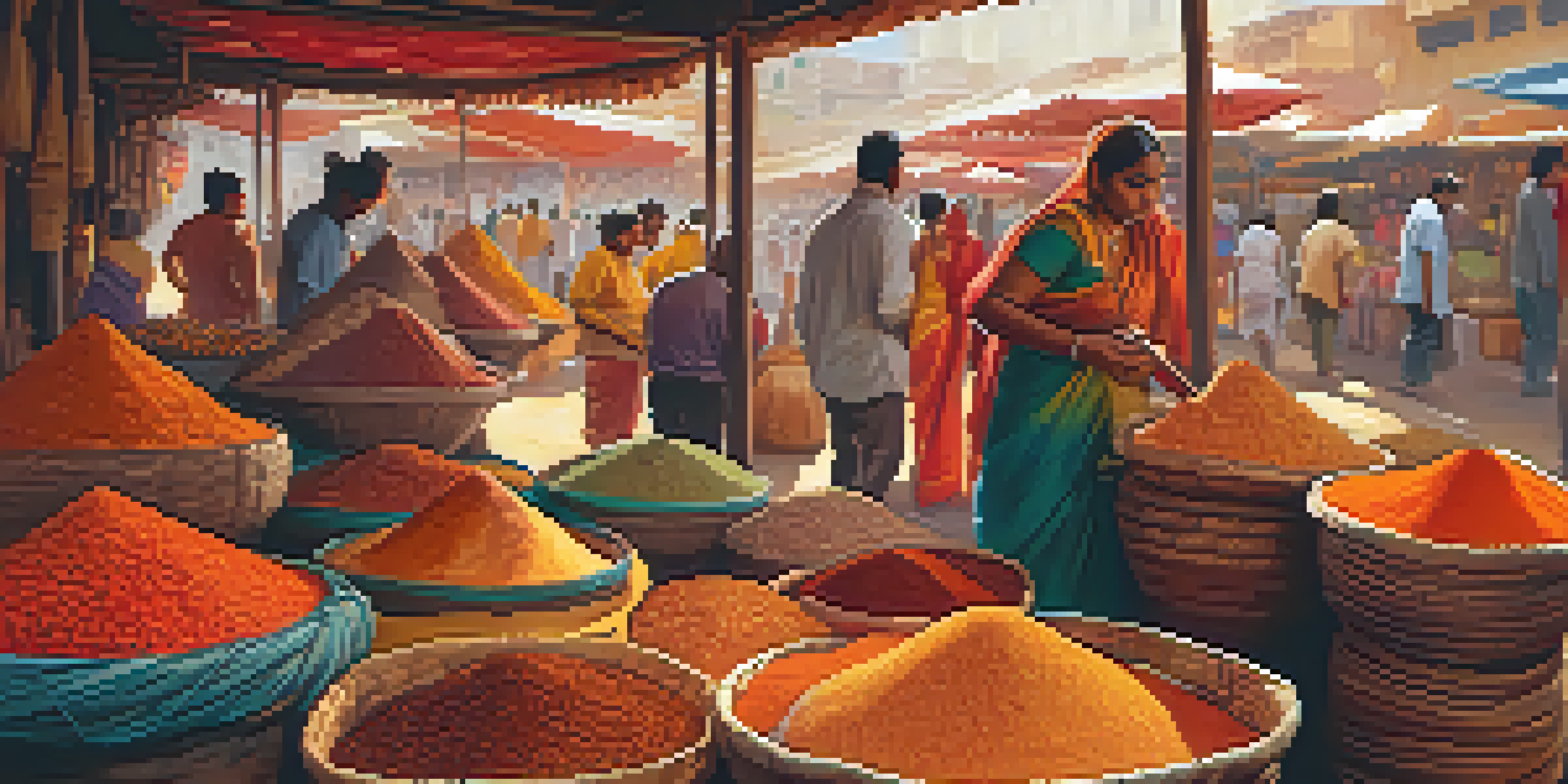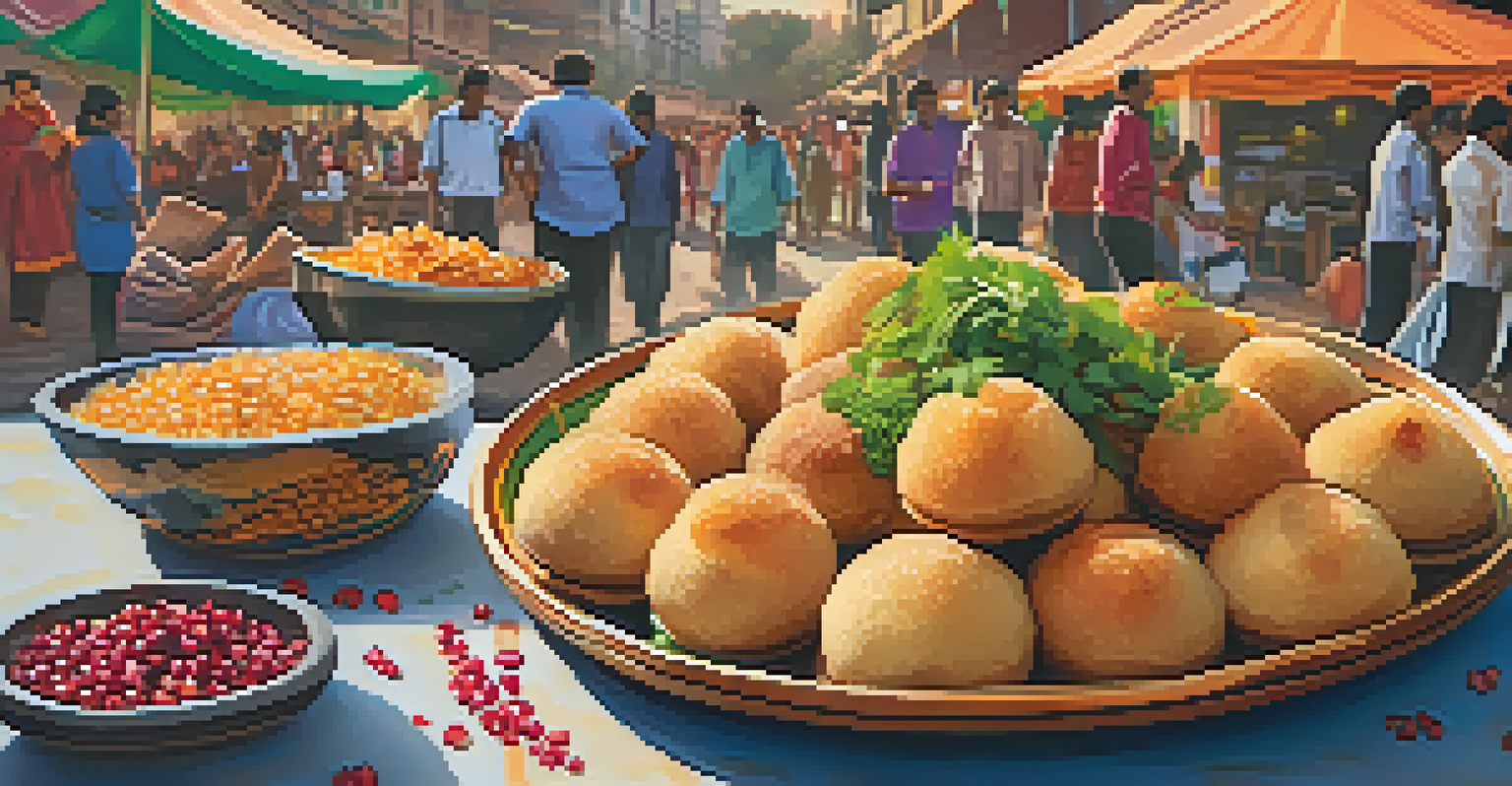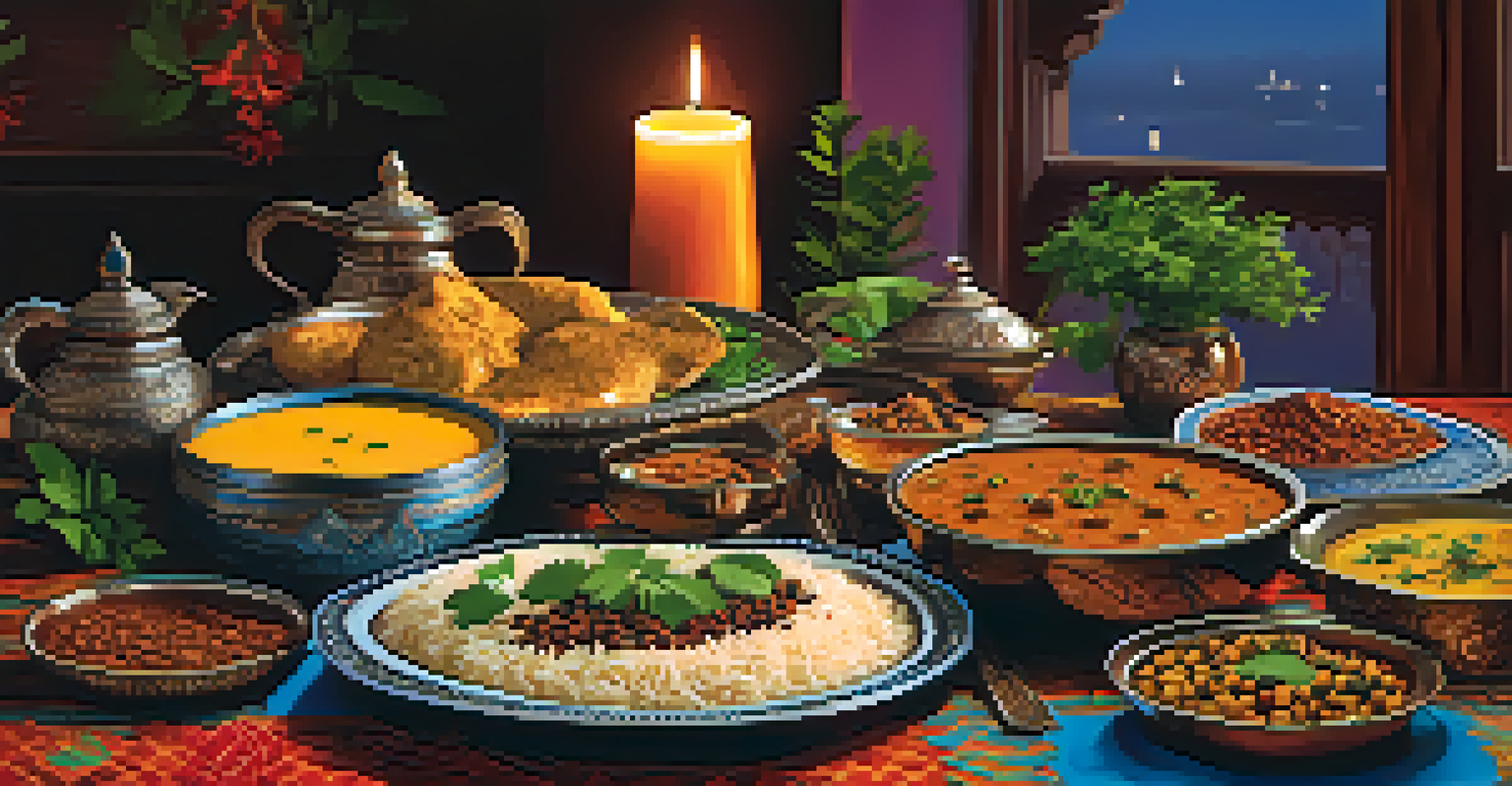Culinary Exchanges: Tasting the World through Indian Cuisine

The Global Influence of Indian Cuisine
Indian cuisine is a vibrant tapestry of flavors, colors, and aromas that has captivated palates worldwide. From the spicy curries of the South to the aromatic biryanis of the North, each region offers a unique taste profile that reflects its history and culture. This diversity not only showcases India’s culinary richness but also highlights how Indian food has influenced global cuisines, blending spices and techniques.
Food is not just what we eat; it is an expression of who we are.
For example, consider how Indian spices like cumin and coriander have made their way into Mediterranean cooking, enriching dishes with a warm, earthy flavor. Similarly, the popularity of Indian-inspired dishes in Western countries, such as tikka masala, demonstrates the cross-cultural exchange that happens through food. This blending of traditions is a beautiful example of how culinary exchanges can create something entirely new and delicious.
Ultimately, as we explore Indian cuisine, we uncover not just recipes but stories of migration, trade, and cultural interaction that span centuries. Each dish tells a tale of its origins and the many hands that contributed to its evolution, making every bite a journey through time and space.
Essential Spices: The Heart of Indian Cooking
At the core of Indian cuisine lies a colorful array of spices, each with its own unique character and culinary role. Spices like turmeric, cumin, and cardamom are not just flavor enhancers; they are integral to the health benefits and depth of the dishes. For instance, turmeric’s anti-inflammatory properties have made it a staple in both Indian kitchens and health-conscious diets worldwide.

Understanding how these spices interact is key to mastering Indian cooking. A pinch of cumin can transform a bland dish into a flavorful masterpiece, while a dash of garam masala adds warmth and complexity. This alchemy of flavors is what makes Indian cuisine so enchanting and its dishes so memorable.
Indian Cuisine: A Global Journey
Indian cuisine showcases a rich tapestry of flavors that influences and blends with global culinary traditions.
Moreover, the art of spice blending, known as 'masala,' varies from region to region, allowing for endless culinary creativity. This diversity in spice usage not only keeps traditional recipes alive but also paves the way for innovative cooking that continues to adapt and evolve, keeping Indian cuisine at the forefront of culinary exchanges.
Traditional Dishes: A Taste of Heritage
Traditional Indian dishes are much more than just meals; they are a reflection of the country’s rich heritage and cultural diversity. From regional specialties like Rajasthani dal baati to the coastal delights of Goan fish curry, each dish carries its own history and significance. Enjoying these dishes connects us to the stories and traditions that have shaped them over generations.
Eating is a necessity, but cooking is an art.
Take, for example, the festival of Diwali, where sweets like jalebi and ladoo are not just treats but symbolize joy and togetherness. Preparing these dishes during celebrations brings families together, reinforcing bonds and shared memories. This communal aspect of cooking and sharing food is central to Indian culture and demonstrates how culinary practices can unite people.
As we savor these traditional dishes, we not only indulge in their flavors but also honor the cultural narratives that accompany them. Each bite becomes a bridge connecting us to the past while inviting us to participate in the ongoing story of Indian cuisine.
Street Food: An Adventure for the Senses
Street food in India is a vibrant celebration of flavors and cultures, offering a unique glimpse into the country’s culinary landscape. From the spicy and tangy chaat of Delhi to the crispy vada pav of Mumbai, street food reflects the local ingredients and tastes of each region. It’s a culinary adventure where every corner of the street has something new to discover.
What makes street food so appealing is its accessibility and the communal experience it offers. Vendors often serve their creations from colorful carts or stalls, creating a lively atmosphere filled with laughter and chatter. Sharing a plate of pani puri with friends while standing on a bustling street is a bonding experience that enhances the joy of eating.
Spices: The Heart of Indian Cooking
The diverse and vibrant spices used in Indian cooking not only enhance flavors but also provide numerous health benefits.
Moreover, street food continues to evolve, incorporating global influences while maintaining its authenticity. This constant adaptation showcases how culinary exchanges play a vital role in shaping food culture, making every street food experience a delicious blend of tradition and innovation.
Fusion Cuisine: Bridging Cultures through Food
Fusion cuisine is where the magic of culinary exchanges truly shines, combining elements from different culinary traditions to create something entirely new. Indian chefs are increasingly experimenting with fusion dishes that marry traditional Indian flavors with global influences. Think of a tandoori chicken pizza or a masala chai latte—these dishes offer a fresh take on classic recipes.
This blending of cuisines not only caters to diverse palates but also fosters creativity in cooking. For example, by pairing Indian spices with Italian pasta, chefs can introduce exciting flavor combinations that surprise and delight diners. Such innovation keeps the culinary landscape dynamic and encourages a spirit of experimentation.
Moreover, fusion cuisine often serves as a conversation starter, inviting people to explore and appreciate different cultures through food. This cross-pollination of culinary ideas is a testament to the evolving nature of cuisine and the rich tapestry of flavors that can emerge from it.
Vegetarian Delights: Celebrating Plant-Based Cuisine
Indian cuisine is renowned for its abundance of vegetarian options, celebrating fresh produce and bold flavors. With a significant portion of the population adhering to vegetarian diets for cultural or religious reasons, Indian chefs have mastered the art of creating satisfying and diverse plant-based dishes. From creamy palak paneer to hearty chana masala, vegetarian food in India is anything but boring.
The use of spices and cooking techniques elevates vegetarian dishes to new heights, making them a delight for the senses. The balance of flavors and textures in dishes like biryani or dal makhani showcases the potential of plant-based cooking, appealing to both vegetarians and meat-lovers alike. This versatility demonstrates that vegetarian cuisine can be just as flavorful and fulfilling as its meat counterparts.
Culinary Tourism in India
Culinary tourism allows travelers to immerse themselves in India's rich food culture while exploring local flavors and traditions.
As global interest in vegetarianism and plant-based diets grows, Indian cuisine offers a treasure trove of inspiration. By sharing these vegetarian delights, we not only promote healthier eating but also introduce others to the rich flavors and traditions of Indian cooking.
Culinary Tourism: Exploring India through Its Flavors
Culinary tourism has become a popular way to experience the culture and heritage of a destination, and India is no exception. Travelers are increasingly seeking authentic food experiences that allow them to taste the local flavors and learn about the culinary traditions of the regions they visit. From cooking classes to food tours, there are countless opportunities to explore Indian cuisine up close.
Visiting local markets, trying street food, and dining in traditional homes provide an immersive experience that goes beyond just eating. These activities offer insights into the ingredients, cooking techniques, and cultural significance behind each dish. For instance, participating in a family dinner during a festival can give travelers a unique perspective on the importance of food in Indian culture.

As culinary tourism continues to grow, it fosters appreciation for the diversity and richness of Indian cuisine. By tasting the world through Indian flavors, travelers create lasting memories and connections that enhance their understanding of this vibrant culture.